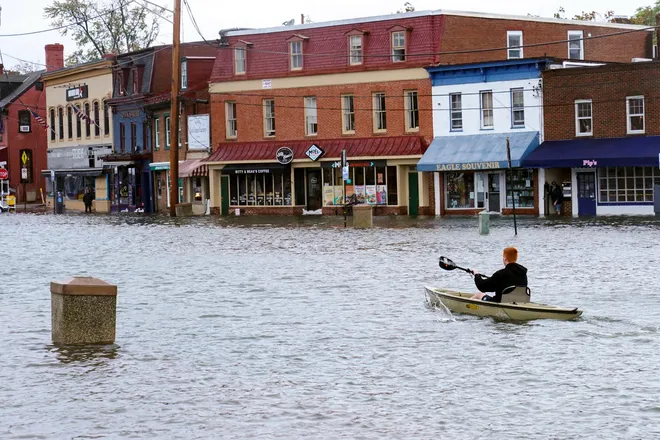Flooding on sunny days? How El Niño could disrupt weather in 2024 – even with no storms
It doesn't take a storm to cause ruinous flooding along our coasts, and climate troublemaker El Niño is expected to worsen this so-called "high-tide" flooding over the next year, federal scientists said in a report released Tuesday.
Last year, the trend for this type of flooding continued as the nation continued to break records.
In fact, eight locations along the East and West Coasts experienced record high tide flooding last year – a trend that's expected to persist in 2024, according to the report, which was prepared by the National Oceanic and Atmospheric Administration.
And for many communities, the expected strengthening of El Niño will bring even more high-tide flood days in the upcoming year.

What is 'high-tide' flooding?
This type of flooding, also known as "sunny day" or "nuisance" flooding, is coastal flooding that leads to disruptions such as road and business closures and longer commute times.
It is becoming increasingly common because of continued sea-level rise, driven in part by climate change. It occurs when tides reach anywhere from 1 to 2 feet above the daily average high tide, depending on location.
Damaging floods that decades ago happened only during a storm now happen more regularly, such as during a full-moon tide or with a change in prevailing winds or currents, according to NOAA.
As sea level rise continues, NOAA said it no longer takes extreme weather to cause disruptive flooding along the coast. The report only examined coastal flooding, not inundation brought on by sudden heavy rain or overflowing rivers.
“Communities across the country are seeing more and more high tide flooding, with damaging effects to transportation systems and infrastructure – particularly in our most underserved communities,” said Jainey Bavishi, assistant secretary for oceans and atmosphere and NOAA deputy administrator, in a statement.
El Nino incoming:Scientists warn an El Niño could bring scorching heat to Earth
Rising seas, flooded cities
Sea level has risen nearly 8 inches worldwide since 1880, but unlike water in a bathtub, it hasn't risen evenly. In the past 100 years, it has climbed about a foot or more in some U.S. cities because of ocean currents and land naturally settling – 11 inches in New York and Boston, 12 in Charleston, S.C., 16 in Atlantic City, 18 in Norfolk, Va., and 25 in Galveston, Texas, according to NOAA.
As the Earth's temperature warms, so do the seas. Heat-trapping greenhouse gases such as carbon dioxide and methane cause more land ice (glaciers and ice sheets) to melt and water to expand. Warmer water takes up more room than cooler water.
More:Pacific Ocean waves, surf getting bigger as climate warms, study says
Looking ahead to 2024 and beyond
Looking ahead over the next year, NOAA predicts that the U.S. will see four to nine high tide flood days – an increase from last year’s prediction of three to seven days and about three times as many than typically occurred in 2000.
Drilling down to specific regions, in the Mid-Atlantic, nine to 15 days are predicted, an almost 350% increase since the year 2000. Along the western Gulf Coast, seven to 14 days are predicted, an almost 350% increase since the year 2000.
The problem is only expected to get worse in the decades to come: By 2050, the nation is expected to experience an average of 45 to 85 high tide flooding days per year. Long-term projections are based on the ranges of expected relative sea level rise of about a foot, on average, across the U.S. by 2050, NOAA said.

Disclaimer: The copyright of this article belongs to the original author. Reposting this article is solely for the purpose of information dissemination and does not constitute any investment advice. If there is any infringement, please contact us immediately. We will make corrections or deletions as necessary. Thank you.

